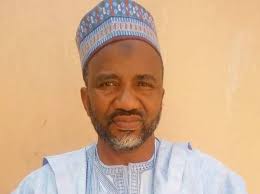The 2019 Appropriation Bill is seriously endangered. Few expect it to lift Nigeria’s embattled economy out of the doldrums. However, there are glimmers of hope for road users in all parts of the country during the year.
The federal government has an elaborate plan for road rehabilitation and construction. In the south-south, the planned rehabilitation of the Odukpani-Ugep stretch of the Calabar-Ikom highway in Cross River State would bring a measure of relief to commuters.
On November 11, 2007, I lost a bosom friend, Samuel James Mendie in a fatal accident caused by one of the hundreds of craters on the Awi section of the road. Mendie would still be teaching electronic instrumentation in the University of Calabar if that road had been rehabilitated 11 years ago.
Memory of my handsome friend flashed into my mind as Nigeria’s puerile lawmakers heckled President Muhammadu Buhari when he listed the award of contract for rehabilitation of the road as one of his administration’s achievements.
When the contract is executed, the number of deaths on what has become a slaughter slab would be reduced drastically.
The planned rehabilitation of the Odukpani-Itu-Ikot-Ekpene road is another glad tiding. Built in 1975 as the only link between Calabar, capital of Cross River Sate and what is now Akwa Ibom State, the road became practically impassable during the reign of former President Olusegun Obasanjo. Obasanjo used it to punish Victor Atta, the then governor of Akwa Ibom State for championing the campaign for 13 per cent derivation for oil producing states. Since then, only cosmetic repairs have been executed on the road. Commuters would heave a sigh of relief when the contract is executed this year.
After more than a decade, the federal government has finally decided on the thorny issue of how to finance the Second Niger Bridge. The present administration decided to fund the project when the private participation plan finally hit the rocks.
However, people are not impressed by the snail-speed of the project. The federal government plans to finish it in 2022. So far only a paltry N33 billion has been allocated to the essential project. Those who see the Second Niger Bridge as a south-east project are making a colossal mistake.
The bridge is a major link between the entire east and western Nigeria. It links the south-south with the west and is a passage to some north-central cities. There is no rail link between the east and the western parts of Nigeria. Niger Bridge is the only link.
The First Niger Bridge which was commissioned in 1966 is now creaking under excess load. Onitsha, the commercial nerve centre of Anambra state is congested because of the massive traffic to and from the east and some north-central cities. That is why work on the Second Niger Bridge should be faster than it is programmed at the moment.
In the 2019 budget speech, Buhari passively mentioned government plan to commence work on east-west rail line. No one expects the tracks to be laid in the next 10 years. The Second Niger Bridge remains the only hope for easing the traffic jam in Onitsha. Nigeria is perhaps the only economy of its size with 90 per cent of land transportation system concentrated on roads.
Nigerians have adjusted to the disproportionate role of roads as a dominant land transportation system. That is why the expectation on the Second Niger Bridge has been excessively high. Government owes the south-east, south-south and even north-central an obligation to fast-track work on the Second Niger Bridge. It would be a huge relief to half of the country.
One of the Herculean tasks set out in the 2019 Appropriation Bill is the exchange rate of the naira. Architects of the Appropriation Bill predicate projections in the budget on an exchange rate of N305 to the dollar. They also expect to drive inflation rate down to 9.9 per cent during the year. That amounts to controlling two opposing rates simultaneously.
The Central Bank of Nigeria (CBN) would need a steady flow of funds from oil, Nigeria’s predominant source of foreign exchange, to sustain the exchange rate set by the 2019 Appropriation Bill. Ironically the funds are not likely to flow freely.
During the year, funds would only flow freely from domestic sources.
Unfortunately, funds from domestic sources would only reduce the chances of sustaining the exchange rate at N305 to the dollar. Sixty per cent of the money in circulation in Nigeria is outside the banking system.
The apex bank has absolutely no control over such funds. The situation is even worse in an election year. Politicians have hundreds of billions of naira outside the banking system.
Even with the law restricting campaign spending by presidential candidates to N5 billion, politicians would unleash billions of naira into the system during the campaigns and flood the economy with liquidity that would be chasing the dwindling stock of forex in the foreign exchange market.
The excess liquidity from campaign funds would put unbearable demand pressure on the country’s lean foreign reserves forcing the apex bank to devalue the naira.
The forex inflow during the year would not be sufficient to allow the CBN to continue with the generous interventions that sustained the official exchange rate last year at N305.



